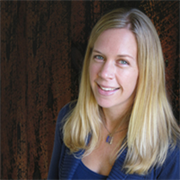

This week we explore the collected knowledge of work by three research institutes (National Academy of Sciences, Seoul National University and UC Santa Barbara) to image possibles within our medical device design and development applications.

This week we explore the collected knowledge of work by three research institutes (National Academy of Sciences, Seoul National University and UC Santa Barbara) to image possibles within our medical device design and development applications.

A key to understand the emotional relationship between a product or service and a user is to find the tacit knowledge and latent needs of the user. But what the user has a personality that does not like to participate?

Part I in a series of articles that will provide insight into TSP, its applicability to the medical device industry, and how it helps achieve the high level of software quality required for devices.

The implementation of human factors engineering throughout the design process will be critical for emerging mobile health applications, not only because FDA is regulating these new mobile medical devices, but because it’s good practice and is an essential tool for decreasing patient safety risks while increasing usability and effectiveness.
If required in the product, the spring is probably the least expensive component of the assembly. However, if it does not function as intended or fails, it can become a warranty issue which can be quite expensive as far as repair, loss of sales and product reputation.
Why should we go back to using water as a solvent? Water-based chemistry has simple operations, high synthetic efficiency, safety benefits, low-cost reactions, and a high potential to generate new synthetic methodologies that can that can be patented to protect your product.
As a designer, it can be easy fall into the trap of focusing on and designing for the user. While this is all very good for the user, it’s not so great for the many other people who must interact with the product throughout its life. The intended user of a product is not the only user and there are a number of “stakeholders” in a product’s life.

When we understand that profitability is a vital part of the equation, it’s easy to see why Sustainability is a challenge worth embracing. By optimizing an existing design, or redesigning to minimize disposable elements, we can make a significant and positive difference.

Through Inclusive Design, people are given the opportunity to continue doing the things that provide them with quality of life. It’s also about using advanced technology without making things complicated and putting user needs first, without sacrificing profit or aesthetic advantages.

Much of the information gathered during evaluation in the early stages of product development is necessarily qualitative. Some quantifiable questions remain: how much deviation is there in the angle at which different doctors hold a laprascopic device? How does the movement of someone wearing a brace compare to that of a healthy person? Questions such as these can be answered using computer vision.